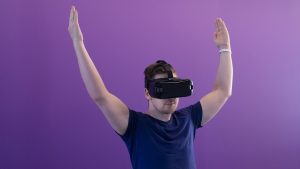Improving cyber safety is an ongoing process, as threats continue to evolve alongside advancements in technology. You should consider several contemporary strategies to enhance your online security:
- Update and Patch: Regularly update your operating systems, software, and applications to the latest versions. Cyber attackers frequently exploit known vulnerabilities in software, and updates patch these vulnerabilities.
- Advanced Password Practices:
- Use strong, unique passwords for each of your online accounts.
- Consider using a password manager to keep track of your passwords.
- Enable multi-factor authentication (MFA) wherever possible for an added layer of security beyond just a password.
- Secure Networks: Be cautious using public Wi-Fi networks. If you need to use a public Wi-Fi, use a Virtual Private
Network (VPN) to encrypt your internet connection and protect your data from potential eavesdroppers. - Beware of Phishing Scams: Be skeptical of unsolicited messages, emails, and social media requests. Phishing attempts have become increasingly sophisticated. Always verify the sources and do not click on links or download attachments from unknown or untrusted sources.
- Secure Devices: Use antivirus software and a firewall on your devices, and consider encryption for your data. Also, physically secure your devices to prevent unauthorized access or theft.
- Privacy Settings: Review and adjust privacy settings on your online accounts and mobile apps. Be cautious about how much personal information you share online.
- Backups: Regularly back up your data to a secure location. This practice helps you recover information in case of a cyber-attack like ransomware or data corruption.
- Education: Stay informed about the latest cybersecurity threats and trends. Cybersecurity awareness training can help you recognize potential threats like phishing scams, new forms of malware, or the latest fraudulent schemes.
- Children and Teen’s Online Safety: If you’re a parent, educate your children about online safety, including the risks of sharing personal information, recognizing cyberbullying, and understanding privacy.
- Incident Response: Have a plan in place in case you experience a cyber-attack. This plan could include steps like disconnecting from the internet, changing passwords, notifying relevant institutions, and in serious cases, contacting law enforcement.
- Smart Home Security: With the increasing prevalence of smart home devices, ensure they are secure. Change default passwords, regularly update their software, and monitor which devices are connected to your network.
- Financial Transaction Safety: Monitor your financial transactions regularly for any suspicious activity, and use credit cards or secure payment services for online purchases. These typically offer better fraud protection than other methods.
Remember, no system can be 100 percent secure. The aim of following these practices is to reduce the risk of cyber threats significantly. The landscape of cyber threats continues to evolve, so staying informed and vigilant is key to protecting yourself.
Article was written on Oct 25 2023.


